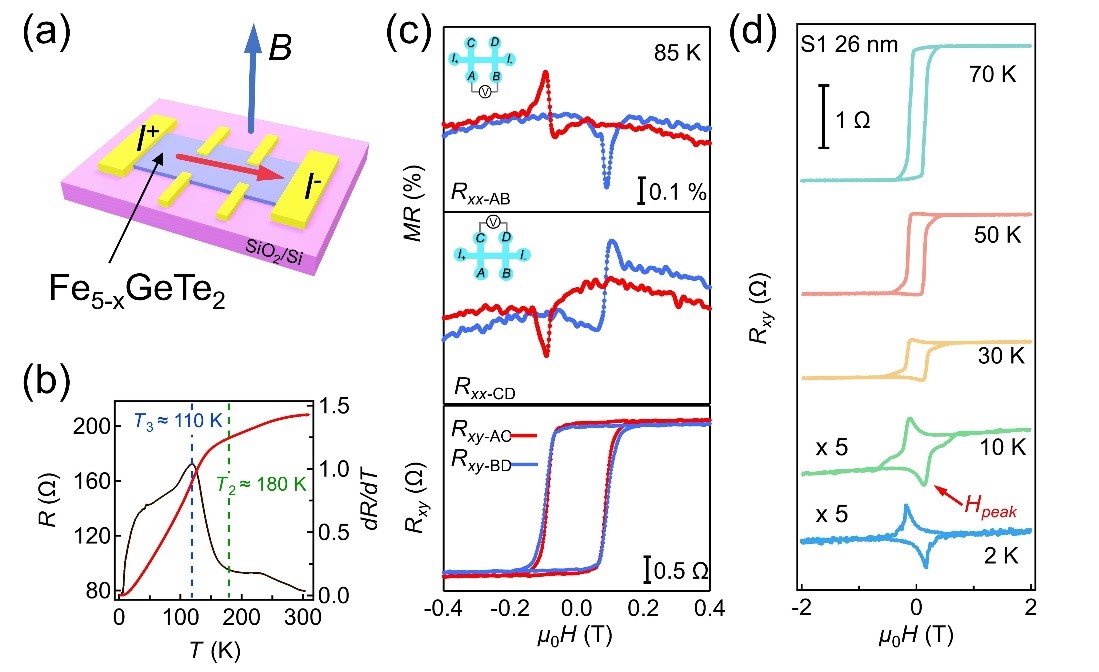
According to a work recently published in ACS Nano, a research team led by Prof. TIAN Mingliang from High Magnetic Field Laboratory, Hefei Institutes of Physical Science (HFIPS) of the Chinese Academy of Sciences (CAS), has revealed a novel non-reciprocal antisymmetric magnetoresistance and unconventional Hall effect in a two-dimensional (2D) van der Waals (vdW) ferromagnetic Fe5-xGeTe2, which may originate from the asynchronous magnetization switching of the magnetic domains.
Two-dimensional ferromagnets with high Curie temperatures provide a rich platform for exploring the exotic phenomena of 2D magnetism and the potential of spintronic devices. As a typical layered ferromagnetic material, Fe5-xGeTe2 has attracted intensive attention due to its high Curie temperature (TC ~ 310 K). However, owing to its complex magnetic ground state and magnetic domains, there is still a lack of thorough understanding of the transport behavior related to its lattice and domain structures.
In this work, the team synthesized high-quality single crystals of the room-temperature ferromagnetic Fe5-xGeTe2 and systematically measured its magnetotransport properties. In bulk samples of Fe5-xGeTe2, the results show a magnetic easy axis switching from in-plane to out-of-plane direction as temperature decreases.
To further explore the interplay of its magnetic structure and magnetotransport properties, Fe5-xGeTe2 nanosheets with thicknesses ranging from 7 nm to 50 nm were obtained through mechanical exfoliation.
"As the sample thickness decreased, the magnetic transport behavior of the restricted Fe5-xGeTe2 nanosheets exhibited completely different characteristics, indicating a significant thickness dependence of the magnetic properties of this system," said MIAO Weiting, a member of the team.
This study has revealed a novel non-reciprocal antisymmetric magnetoresistance and unconventional Hall effect in the presence of a magnetic field. Through exact analysis of its temperature, field orientation, and sample thickness dependencies, it can be attributed to the additional electric field contribution of stripe domain structure to magnetoresistance in the material.
This work shows that the micromagnetic structure of the system has a significant impact on its macroscopic electrical transport characteristics, thus providing a deeper understanding of 2D ferromagnetic materials and opening new device application avenues.

Transport properties of the Fe5-xGeTe2 nanodevice. (Image by MIAO Weiting)